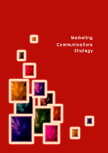Marketing Communications
 |
Details
Textbook:
Pages : 370; Paperback;
210 X 275 mm approx.
Suggested Case Studies
Workbook:
Pages :
299; Paperback;
210 X 275 mm approx, Sample Applied Theory Questions
Pricing
Textbook Price: Rs. 750;
Workbook Price: Rs. 700;
Available only in INDIA
Buy Now
Please allow 5 to 10 days for delivery.
Detail Table of Contents
Direct Marketing : Chapter 15
SUMMARY: Direct marketing involves direct communication with customers and prospects to obtain an immediate and measurable response. Although direct marketing was once considered "junk mail" there is renewed interest in it due to various factors. Prominent among them are changing customer preferences, media fragmentation, alternate distribution channels, development of new technologies, and focus on relationship marketing. However, a proper database is essential to run a direct marketing campaign successfully. A database contains information about customers and competitors and internal information about the company, which can be used to design effective direct marketing campaigns. Databases can be developed either by using internal sources or external sources. Internal sources include information gathered from the information requests by the prospects, existing |
|
customer demographic details and past purchase history. A company can also obtain information from third party entities. These entities provide data sets, which contain information on specific variables, such as customer segmentation based on income levels, education, and occupation. Census data is another major external source.
A direct marketing campaign process involves three key steps - developing the framework for direct marketing campaign, developing the direct marketing campaign and implementing the campaign. Key issues considered while developing the framework for direct marketing are communication objectives, target audience, and media vehicles to be used. While developing the actual campaign, a company focuses on two issues - content of the campaign and selection of individual customers. While implementing the campaign, the company should focus on good order fulfillment and constant evaluation of the campaign.
Selecting the right media will determine the success of the direct marketing campaigns. Media selection will depend on the communication objectives, product characteristics, target audience, and budgetary allocation for the campaign. There are four prominent media options that are widely used by companies - direct mail, telemarketing, mass media, and the Internet. Direct mail and telemarketing help a company achieve higher response. However, these two media involve higher costs and efforts. Direct mail and telemarketing are used to maintain relationships with customers. Mass media like newspapers, magazines, and television are cost effective in reaching the target audience. However, due to their anonymous nature, it is not possible to maintain one-to-one relationship with the customers. Mass media is, therefore, used to recruit new customers and build brand awareness among the customers. The Internet is the new media, which has gained popularity due to the low-costs and high interactivity involved.
Direct marketing offers several advantages to marketers. Direct marketing is response driven unlike other communication elements. Response tools are incorporated in direct marketing campaigns, to enable customers to respond to the offer. Evaluation of the effectiveness of direct marketing campaigns is easier as direct marketing obtains immediate and measurable responses. Direct marketing also offers precision targeting thereby securing higher response from customers. Another major benefit that direct marketing offers is that the campaigns can be conducted without the knowledge of competitors, thus providing competitor exclusivity. However, certain disadvantages are associated with direct marketing. Direct marketing is expensive compared to other marketing communications mix elements. This is more so for mass marketed products where the cost of reaching a large number of customers individually, through this route, is uneconomical. Another disadvantage is the "junk mail" image of direct marketing.



